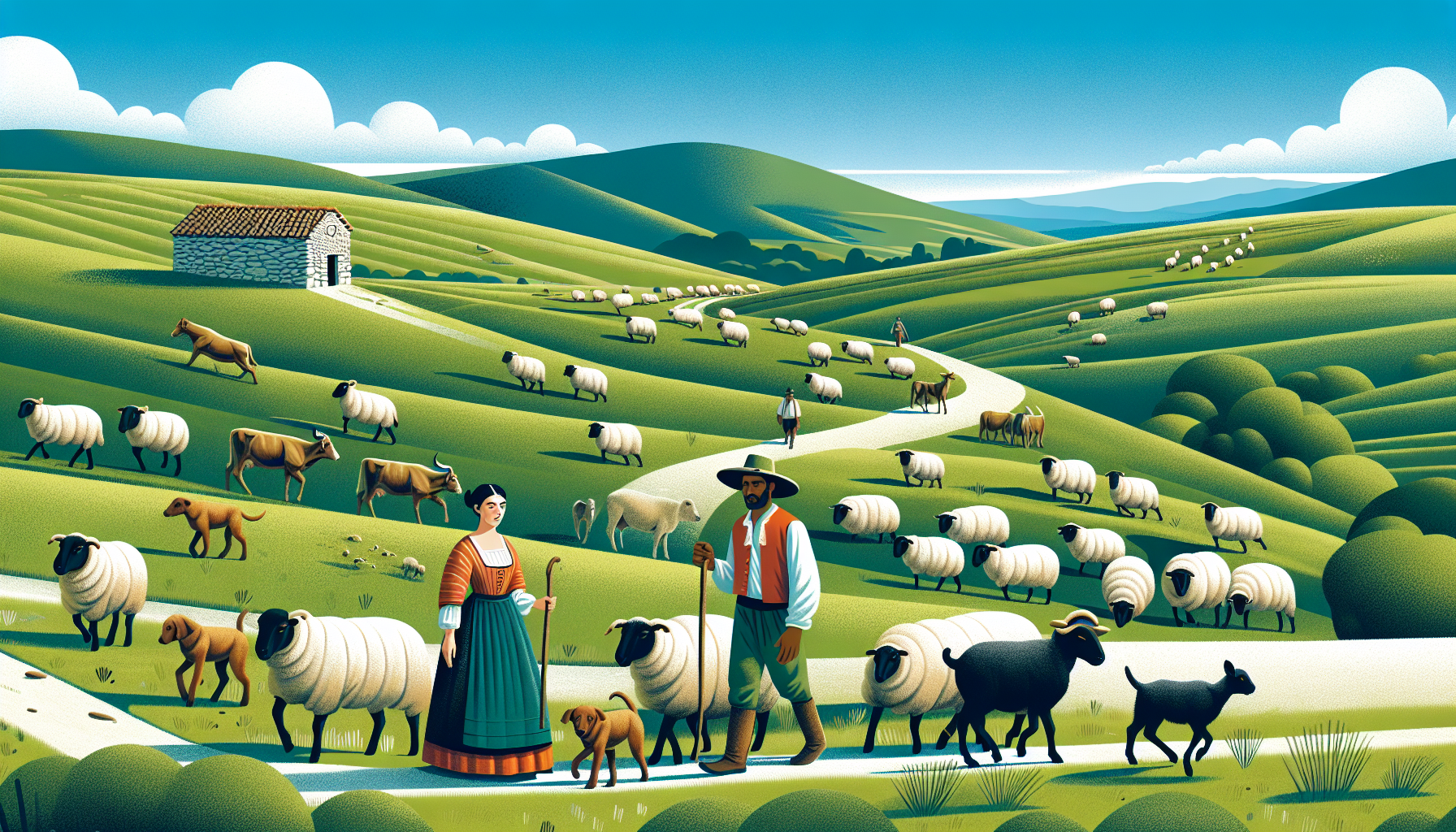Understanding the ancient practice of transhumance
For centuries, transhumance has served as the nurturing heartbeat of pastoral life. This traditional practice, primarily utilized in regions covered by mountains and hills, has been a significant lifeline for livestock farming. Particularly in Europe and Africa, transhumance involves the seasonal migration of livestock, typically sheep and cattle, from highlands in the summer to lowlands in the winter. This cycle ensures adequate access to resources, particularly pastures for grazing, fostering healthier and more sustainable livestock.
What many might not realize is the integral role transhumance plays in animal welfare and biodiversity. Since the livestock continually move through different terrains and grazing lands, there is an incredible opportunity for a flow of organic matter between high and low altitude ecosystems. This cross-pollination aids soil fertility, promotes plant diversity, and contributes substantially to the maintenance of open landscapes, which are all pivotal for the welfare of the entire ecosystem.
The impact of transhumance on biodiversity
Through transhumance, livestock farmers indirectly cultivate a rich, diverse habitat for numerous species. One could say that these farmers are not just shepherds to their livestock, but also guardians of nature. For instance, the practice of moving sheep from one pasture to another encourages an array of flora and fauna to flourish, simultaneously creating a healthier living environment for the livestock and facilitating the migration and propagation of countless species. This pastoral tradition not only aids in preserving the natural balance of ecosystems but also supports wildlife conservation.
The decline of transhumance and its repercussions
Despite its benefits, transhumance faces an uncertain future. As modern farming practices take hold, many pastoral communities have abandoned this ancient practice. This shift poses a significant threat to the pastoral landscapes and biodiversity that have depended on the annual movement of herds for centuries. Loss of plant species, disruption of animal habitats, and decreased soil fertility are all potential consequences of abandoning transhumance, underscoring the need to understand and preserve this practice for future generations.
Being at the frontline of wildlife conservation and responsible pet ownership, it is crucial we make an effort to understand the role of traditional practices like transhumance in maintaining the balance of our ecosystem. We owe it not just to our pets and other domestic animals we care for but also to the countless species that coexist with us on this planet.
The ancient tradition of transhumance is a rich tapestry, intertwined with the lives of countless creatures and the health of our ecosystems. Inherent to this practice is a potent lesson about the interconnectedness of life, and a mirror reflecting that our actions, as small as they might appear, can play a monumental role in stewarding the health of our planet. Embracing transhumance is embracing a world where every creature is respected, valued, and given the chance to thrive in harmony.
Sophia Martinez is a dedicated and compassionate animal welfare advocate and writer, who has been enriching the lives of pet owners and animal enthusiasts for over 15 years. At 48 years old, Sophia’s expertise spans a wide range of topics, from pet care and nutrition to wildlife conservation and ethical animal treatment. She holds a Bachelor’s degree in Veterinary Science from Cornell University, which laid the foundation for her deep understanding of animal health and behavior.
Sophia’s career as a writer began after years of working in animal shelters and veterinary clinics, where she discovered her talent for communicating complex animal care concepts in an accessible and engaging manner. Her desire to make a difference in the lives of animals led her to become a prominent contributor to a well-known online news platform, where she now serves as the lead writer for the animal category.
Through her insightful and informative articles, Sophia aims to educate the public on responsible pet ownership, the importance of preserving natural habitats, and the latest advancements in animal health research. Her work not only highlights the joys and challenges of living with animals but also advocates for a more compassionate world where all creatures are respected and valued.
In addition to her writing, Sophia is an active volunteer with several non-profit organizations focused on animal rescue and habitat conservation. She often shares her personal experiences with fostering animals and participating in wildlife rehabilitation programs, further inspiring her readers to get involved in animal welfare causes.
Sophia’s passion for animals and her commitment to advocacy shine through in every piece she writes, making her a trusted and beloved figure among animal lovers worldwide.



